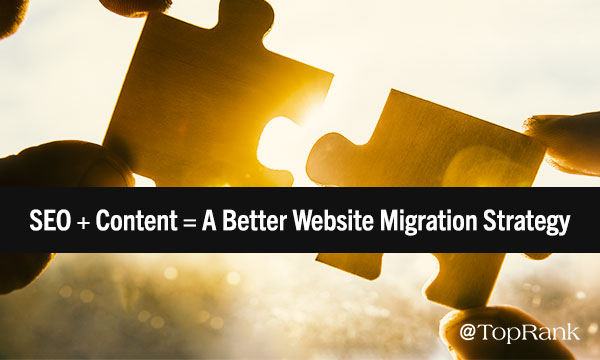Source: Online Marketing Blog – TopRank®

Digital marketers know their company’s website is more than a digital storefront. It’s a marketplace that must deliver a quality, engaging experience for prospects and customers once they arrive. So, it’s no surprise that the average company invests in a website redesign every three years to stay fresh, competitive, and meet evolving customer expectations.
In our experience, however, design faux pas aren’t the biggest marketing missteps that can lead to poor results after a migration—it’s the lack of a solid website migration strategy that encompasses both SEO and content considerations.
There’s no question that SEO needs to play a leading role in the planning, design, and execution of any website migration. But SEO can’t stand alone—it needs a content lens to ensure a solid performance after the switch is flipped.
Better Together: Content + SEO for Migration Success
A poorly planned and executed migration after a site refresh or redesign can lead to decreases in organic traffic and reduced search visibility in both the short- and long-term. And chances are, your marketing team has spent innumerable hours crafting content and optimizing your site for both user experience and search engine performance—and you don’t want it all to be for naught.
By baking content and SEO into your website migration strategy, you have the opportunity to:
#1 – Strike that oh-so-necessary balance between SEO and user experience.
If you’re embarking on a website redesign, chances are your goals are to improve user experience and optimize conversions paths, all while strengthening your organic search footprint. But without SEO and content working together, the steps you take to reach those goals can’t be fully informed or reach their full potential. The key is integration from the start.
#2 – Bolster top performing content (and weed out weak or irrelevant content).
Site migrations often involve some picking and choosing as far as what content needs to be kept,…
Audience Team
The digital audience insights you need to build, manage and market to your digital audiences.

